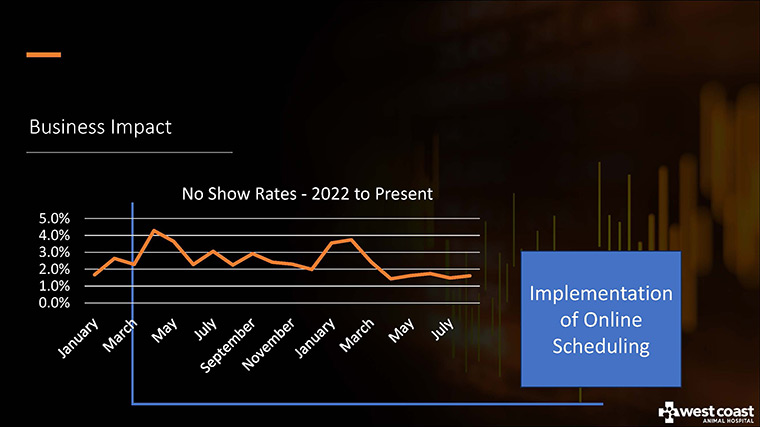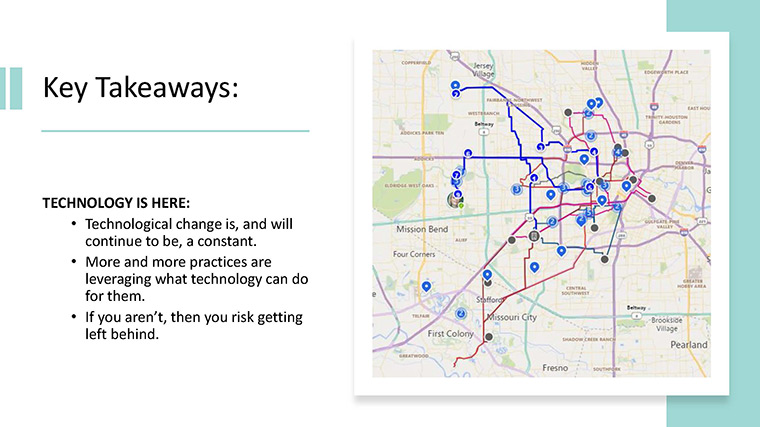From note taking to scheduling, technology can help veterinary practices in many ways
No-show appointments, dictating medical records, and figuring out doctor scheduling are just some of the daily inconveniences at veterinary practices. But technological developments can help in these and other areas of practice management. It’s just a matter of taking the time and effort to make it happen, according to panelists at the “Veterinary Medicine, Innovation, and Technology” session at the 2023 AVMA Veterinary Business and Economic Forum, held virtually October 24-25.
They recommended practice leaders pick a piece of technology to look deeper into and explore how it could integrate with their practice, considering potential risks toand what the impact on workload and efficiency would likely be. Then, calculate a budget for new technology and assess the return on investment in terms of tangible and intangible benefits.
The panelists talked about their journeys in implementing online scheduling, artificial intelligence (AI), remote customer service representatives, and software suited for a mobile practice. All had encountered challenges along the way, but found the change was worth it in the long run.
“My main thing is, if you're not embracing technology now—even something little like a video otoscope—try something small, then embrace it, or else risk falling behind,” said Dr. Katie Eick, founder of Rockin’ Pets, Rollin’ Vets, a mobile practice in Houston.
Online scheduling
Tom Gibbings Jr. is co-owner of West Coast Hospital in San Diego, where he is responsible for business operations, technology, and marketing. He and his wife, Dr. Megan Gibbings, started the practice, which now has 45 staff members and nine veterinarians. They see about 130 patients a day, and Gibbings credits technology for playing a big role in the practice’s growth.
Since adopting online scheduling software in March 2022, which allows clients to book directly to the practice calendar, the clinic has seen the following results:
- 25% of all appointments have been made online.
- 35% of online appointments are made after business hours.
- 2% revenue increase attributable to online scheduling.
- 30% reduction in call volume.
That 30% reduction doesn’t represent a decrease in overall work done but rather an increase in customer satisfaction and reduced stress for staff members, Gibbings said.
“Instead of putting everyone on hold and putting out fires, you convert from a synchronous to asynchronous workflow,” he said. “
Appointment reminders, either by text or email, are critical as are requiring appointment deposits. Together, Gibbings says these methods encourage clients to show up to appointments they made and mitigate risks. Now no-show rates are lower than before implementation. Erroneous appointments, double booking, and lost appointments don’t happen as much either.
Indeed, online scheduling doesn’t exist in isolation, but needs other components. A clinic’s practice management software (PIMS) will need to be integrated into the system as well its website, which is where most of the client traffic comes from. Online forms help collect information ahead of time.
“Ease into it,” he said. “Don’t open your entire calendar at first.”
Artificial intelligence
AI is a new, but rapidly evolving field of technology. It may still be in its infancy, but AI-powered tools are already impacting the way veterinarians and their teams practice medicine. AI will not replace the veterinary team any time soon, but it can automate tasks that previously consumed veterinarian and team time.
Dr. Brendon Laing is a small animal practitioner who owns Town & Country Animal Hospital in Stouffville, Ontario, and is president-elect of Ontario VMA. He discussed using AI with two tasks in particular.
For one, Dr. Laing said AI-empowered radiology interpretation software is great for a second opinion, especially when interpreting X-rays, as it provides enhanced diagnostic accuracy because it can recognize abnormalities that could have been challenging for even the best veterinarian. The program Dr. Laing uses can diagnose up to 55 conditions.
In addition, it allows for a faster turnaround time—from hours to days, he says—and reduces workload while increasing the number of X-rays his clinics perform between 10% and 20%.
The second area in which veterinarians at his practices use AI is with medical record summary software. These tools use natural language processing and machine learning to summarize information, which can be recorded during the patient visit.
“I take out my phone, I hit record, and I put it on the table. It listens and summarizes everything that was said into an easy-to-read SOAP,” he said. “What this does is make sure my records are consistent among the doctors and across the entire hospital. They make sure that we’re not missing things that were said in the exam room. And it really helps our communication across patient records.”
Dr. Laing said using the software frees up his practitioners so they are not spending hours summarizing medical records after an eight-hour day at the clinic.
Custom software
Dr. Katie Eick of Rockin’ Pets, Rollin’ Vets talked about the challenges she faced in implementing a large technology project to help with routing staff members to appointments.
She started her mobile practice in 2016 in Houston with one truck, one doctor, and one employee. The practice was doing well enough that she could add doctors and trucks, but the situation soon became a logistical nightmare.
More people and vehicles meant needing to consider what part of town each doctor was going to be in and when, client reference for each doctor, doctor’s skill set, truck capability, and client availability.
“It’s too many variables to put into the human brain. Even multiple human brains can’t do it,” Dr. Eick said. “I had one employee and that's all he did. It was a full-time job, and he could not do it effectively. So we realized we needed technology to help us.”
She worked with staff members to implement a customer relationship management and enterprise resource planning software. They also changed their PIMS with a custom application programming interface (API). The project was supposed to take six months, which turned into three years.
Now that the software has been implemented, however, practitioners can more easily pivot if a client cancels and another one needs to be seen at that time, or the customer service representative can see when someone is in a certain area next.
“The takeaway from this is overcome the short-term hurdles because the long-term benefit is going to be worth it,” she said.
For practices that have tried and failed to adopt new technologies, she challenged them to look further into what happened. How was the technology implemented? Can you go back and do it better? If you haven’t added any new technology, why not?
Don’t know where to start when it comes it implementing new technology in practice?
Check out these 3-2-1 Insight-to-Action Guides created for the “Veterinary Medicine, Innovation, and Technology” session at the 2023 AVMA Veterinary Business and Economic Forum. Each one gives more information about online scheduling, artificial intelligence, technology to assist with staffing, and how to implement new technologies in practice.



